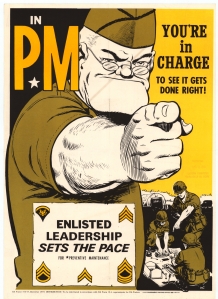While going through the archives at the Billy Ireland Cartoon Library & Museum looking at Will Eisner materials, I kept running across items relating to Al Capp. Pictures of Capp and Eisner discussing the Cartoonists Society, letters between the two. What caught my eye; included in a batch of comics given to Eisner by the U.S. Labor department as examples was Lil Abner and the Creatures from Dropouterspace. It was drawn by Frank Frazetta and is one of the few complete comics that features his art throughout. He was with Al from 1952 to 1961 and is credited with a huge amount of work for Lil Abner, as well as his work on Long Sam, a strip about a baseball player. Capp had many assistants throughout his career, including MAD’s Jack Rickard.
the two. What caught my eye; included in a batch of comics given to Eisner by the U.S. Labor department as examples was Lil Abner and the Creatures from Dropouterspace. It was drawn by Frank Frazetta and is one of the few complete comics that features his art throughout. He was with Al from 1952 to 1961 and is credited with a huge amount of work for Lil Abner, as well as his work on Long Sam, a strip about a baseball player. Capp had many assistants throughout his career, including MAD’s Jack Rickard.
Capp led an interesting life and a full-length, objective biography, on the order of David Michaelis’ masterful Schulz and Peanuts: A Biography, has yet to be written. Capp started in the comics as an assistant to Ham Fisher (Joe Palooka). After Capp wrote about his experiences with Fisher, Fisher went nuts and accused Capp of drawing obscene comics. He went so far as to collect “examples” of these comics which were introduced as evidence in court. They later turned out to be faked, and after Capp was exonerated and Fisher humiliated, Fisher killed himself. Al Capp’s career was brought down in the 1960s after accusations of (and at least one arrest for) forcing himself on coeds during his college lecture tours.
Columnist Jack Anderson got sworn affadavits from several undergraduate women accusing Capp of trying to rape them. And throughout his career Capp was alleged to have forced himself on a number of Hollywood starlets including Grace Kelly and Goldie  Hawn. Capp’s diatribes against the younger generation are especially noted. Witness Capp’s lp of monologues, Al Capp on Campus. The record has been digitized and both sides are available for download. Capp was an interesting populist, and one person said this about him, “You got your money’s worth with Al Capp, but when the milk went sour it could really curdle.”
Hawn. Capp’s diatribes against the younger generation are especially noted. Witness Capp’s lp of monologues, Al Capp on Campus. The record has been digitized and both sides are available for download. Capp was an interesting populist, and one person said this about him, “You got your money’s worth with Al Capp, but when the milk went sour it could really curdle.”

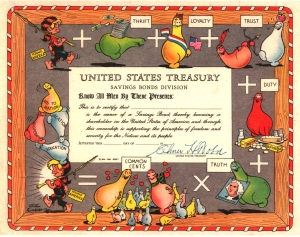 In 1955, America’s Town Meeting of the Air (an ABC radio show) released an lp of highlights. Among the great issues between 1935-1955 that were selected, a short speech by John Mason Brown decrying the effects of comics on culture, given in 1948. The acolyte of Frederic Wertham famously declared comics to be “the marihuana of the nursery, the bane of the bassinet, the horror of the home, the curse of the kids, and a threat to the future.” Al Capp’s retort is a complete smackdown, pointing out that reality is much more violent than any comic book. His proud admission to his contribution to juvenile delinquency shows just how cool he was. Audio of these brief speeches has been uploaded to
In 1955, America’s Town Meeting of the Air (an ABC radio show) released an lp of highlights. Among the great issues between 1935-1955 that were selected, a short speech by John Mason Brown decrying the effects of comics on culture, given in 1948. The acolyte of Frederic Wertham famously declared comics to be “the marihuana of the nursery, the bane of the bassinet, the horror of the home, the curse of the kids, and a threat to the future.” Al Capp’s retort is a complete smackdown, pointing out that reality is much more violent than any comic book. His proud admission to his contribution to juvenile delinquency shows just how cool he was. Audio of these brief speeches has been uploaded to 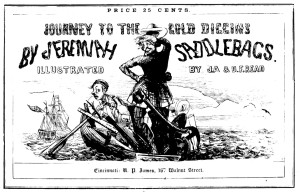

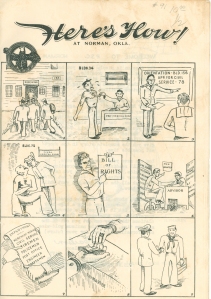

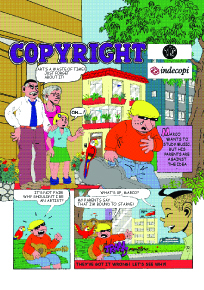 The World Intellectual Property Organization and the National Institute for the defense of Competition and Protection of Intellectual Property (whew!) have jointly-produced comic books explaining both copyright and trademarks (in at least six different languages!).
The World Intellectual Property Organization and the National Institute for the defense of Competition and Protection of Intellectual Property (whew!) have jointly-produced comic books explaining both copyright and trademarks (in at least six different languages!).
